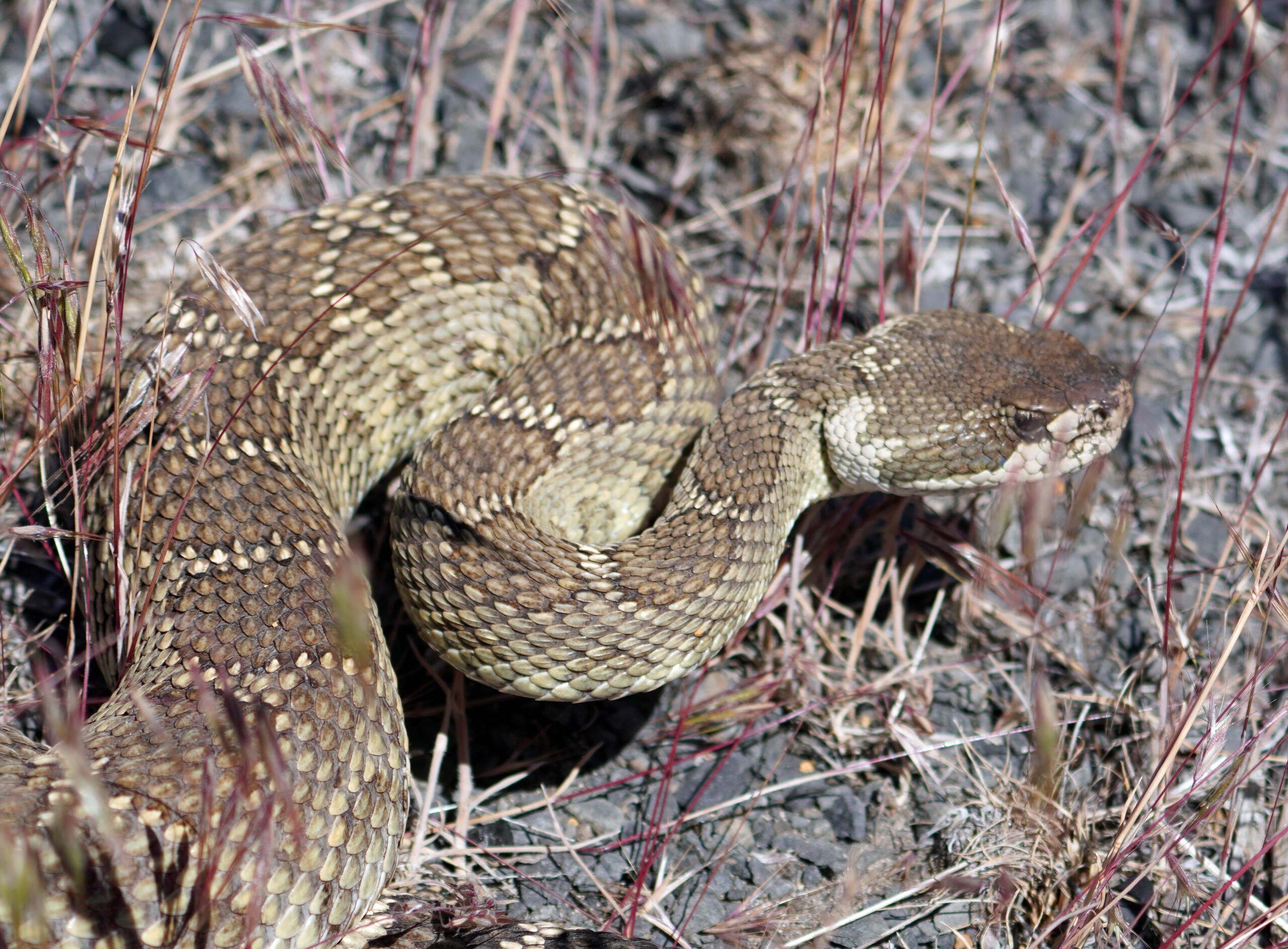Here is our Northern Pacific Rattlesnake, and a species that can be mistaken for one also. This actually happened to me so that is why I am rewriting this article and updating the photos. For this correction I thank Braden Gehrmann who informed me via email of what I had misidentified. The light brown specimen was found in the open part of the Bear Canyon Trailhead Park. It seemed to prefer a fairly open area. The one with the dark spots was sighted off the highway very close to the Yakima Training Center. It is a Gopher Snake also known as a Bull Snake. These species tend to get aggravated around people and rattle their tails. I heard its tail slapping against leaves but I could not see it so I thought it was a rattlesnake. Yep, it fooled me.
Northern Pacific Rattlesnake (Crotalus oreganus)
Our overdue warmer weather is bringing out some of my favorite animals near Yakima. Off of highway 12 in Naches is a state park called the Bear Canyon Trailhead. In addition to hiking along a trail of amazing landscape, you can find a variety of fascinating animals. The two that I usually find are the Sagebrush Lizard and the Northwestern Pacific Rattlesnake. Warmer weather, of course, is the primary influence for sightings, but sometimes thing happen that you don’t expect. I was driving back from Oregon the other day and the temperature was 57 degrees with intense wind. But the sun was shining so I decided to stop. After wandering around for a while I did not see anything so I decided to head back to my car. Then, just in case and maybe, maybe, maybe, I wandered a little more. And much to my delight this Northern Pacific Rattlesnake crawled out in front of me. I’ve run into venomous snakes throughout America and other parts of the world, but none of them are as easy to deal with as our Northern Pacific Rattlesnake. This snake is well known for it’s non-aggressive behavior and this one followed that reputation. He was less than twelve inches away from my foot and easily could have bitten me, but all he did was crawl quickly away and hide under a big rock. Perhaps the low temperature had something to do with that but the other ones I encountered in much warmer weather reacted in very similar manner. No, that does not mean you should not be careful around them. Keep an eye on the ground when you hike around the dryer parts of this state. Stepping on one might just ruin their day and yours. If you do find one, expect it to crawl quickly away and begin rattling a warning for you to stay away. If you excessively agitate these reptiles, however, they will react like their cousins and bite you. So don’t do that.
<
>



Leave a Reply
You must be logged in to post a comment.